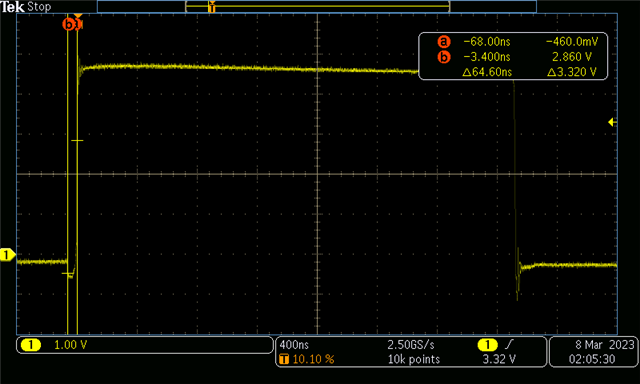Other Parts Discussed in Thread: TPS50601A-SP,
Hello TI E2E,
We’re trying to determine the required current rating for the external Schottky diode that connects to the Phase Node of part number Flight Part: 5962R1820501VXC, (Eng. Part: TPS7H4001HKY/EM).
We noticed in the evaluation board schematics that Diodes Inc Part number B230-13-F is used for this.
This part has a forward surge rating of 50A, and an average rectified output current of 2Amps.
We also noticed in figure 4 of the 1master/3slave evaluation board user guide that there appears to be an interval when both the high-side & low-side fets are off (presumably to prevent shoot thru current).
See annotated figure 4 below.
If this does occur, it would seem that would leave the parallel combination of the low-side fet body diode and external Schottky diode to supply current during this interval.
Then it would seem if Vf-body diode > Vf-Schottky then most/all of output current during this interval will flow thru the external Schottky diode ?
If this is the case, should we size the external Schottky diode such that it can handle the full output current to the load ?
If this is not the case can you please explain how we should go about determining the required current rating of the external Schottky diode.
Thank you,
John Lally.


